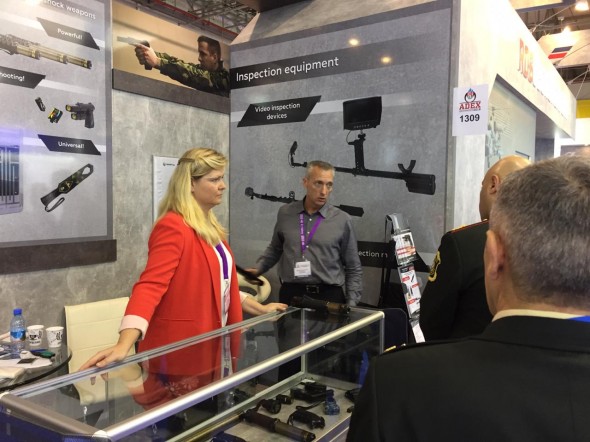
national exercises
The newly established ARCC (Aviation Search and Rescue) military-civilian center consists of three components: a main coordinating center located in the Polish Air Navigation Services Agency (PAZP) and two cooperating military subordinate centers located under COP-DKP (Air). Operations Center - Aviation Component Command) and KOM-DKM (Marine Operations Center - Marine Component Command).
On November 15 last year, Poland hosted the largest exercise of the Air Search and Rescue Service. The above project was implemented as part of the annual exercises of the Operational Command of the Polish Armed Forces (COD). RENEGADE/SAREX-18/II. System solutions operating as part of the air search and rescue service (ASAR), interacting with the National Fire and Rescue Service (CRS-G) and the National Medical Rescue System (PRS) were subject to verification.
As part of the exercise, two episodes were conducted in the area of search and rescue operations, which, due to their open nature, were very popular with services, institutions and organizations cooperating within the framework of the ACAP service.
Over 500 people participated in both episodes. One of the main goals of the exercise was to test the real-time flow of information, the implementation of procedures and the operation of the ASAR service with elements separated from the Polish Armed Forces and the non-military system intended for cooperation. The military-civilian air search and rescue coordination center (RCC) located in the Polish Air Navigation Services Agency (PANSA), established in January last year, was subjected to a special assessment.
The scenario of the first episode took place in the West Pomeranian region and assumed simultaneous activity at two sites located in the vicinity of the town of Mrzezhino. As part of the 36th Air Defense Missile Squadron (36th OP Candidate of Technical Sciences), specialized chemical rescue teams of the Polish Armed Forces and the State Fire Service (SFS) eliminated the leak of a hazardous substance caused by a plane crash and provided assistance to the victims of this incident. At the same time, activities aimed at helping the victims of the plane crash were carried out in the nearby area. Due to difficult weather conditions, the head of rescue operations (KDR) was unable to use the helicopters of the Polish Air Ambulance Aviation (LPR) and the Air Search and Rescue Group (LZPR).
However, the coordinated actions of the Polish Army, the State Fire Service, the Police, the Military Police, the State Medical Rescue System, the Polish Red Cross (PKK) - the Szczecin Group led to the discovery and assistance at the scene. and transportation of aircraft passengers to hospitals, students of the uniform class of the School Complex in Goschino and soldiers of the 36th OP. The coordination of the activities of the services of the non-military system was carried out under the leadership of the crisis management group, established within the framework of the Provincial Crisis Management Center of the West Pomeranian Voivodeship.
The second episode was held in the Warmian-Masurian Voivodeship, not far from Lake Svenchaity. Not far from the town of Giżycko, an aviation incident occurred with a military transport aircraft, which was accidentally hit by a rocket that had to be launched on an emergency basis across the lake near Kalskie Loki. The emergency landing turned into a massive disaster in which 55 passengers and 4 crew members were injured.
Applicants on this day had to get up very early, as at 6:30 in the morning the process of preparing them for the appearance of wounds and injuries began. The victims were 45 classmates of the Vocational Training Team (ZDZ) in Giżycko, 5 rescuers from the Masurian Voluntary Rescue Service and 2 representatives of the Faculty of Social Sciences of the Security College in Giżycko, while their profile was being prepared. rescue team PCK from Warsaw. Students of the uniformed class of the ZDZ showed great determination, responsibility and patience necessary for the role of the victims. Participation in this exercise undoubtedly allowed them to gain experience and in the future to consciously choose the service that is closest to them.
Already at the first stage of the event, the information flow was checked within the information service (FIS Olsztyn), confirmation of data from secondary and primary radars in cooperation with the military air defense control body. Another element of the development of the situation was the upload of educational information about the aircraft accident to the Emergency Alert Center (emergency number 112). All activities were initiated by the Civil and Military Aviation Search and Rescue Coordination Center (ARCC), the most important element of which is in PANSA. The Center of the VGCC activated the subordinate resources of the military service and began to coordinate actions with the non-military system through the VKZK of the Warmia-Mazury Voivodeship, the KG of the PSP and the Main Police Department. The Volunteer Fire Service detachment from Harsha was the first to arrive on the scene, and then the State Fire Service detachment from Węgorzewo, whose representative took the position of head of the rescue operation.
The main training elements operating at the scene were two aviation search and rescue groups (LZPR - W-3WA SAR military rescue helicopters with their crews), allocated from the 2nd search and rescue group (2nd GPR) from Minsk - Mazowiecki and the 33rd transport group. Air base (33 . BLTr) from Powidz. In order to increase the efficiency of operations in the Warmia-Mazury Voivodeship, LZPRs from the 2nd Search and Rescue Group operated from Olsztyn-Mazury Airport (EPSY), and LZPRs from the 33rd BLTr from Minsk-Mazowiecki Airport (EPMM). The crews of the Polish United Workers' Party cooperated with the rescuers of the Specialized High-Altitude Rescue Groups from Olsztyn and Goldap (PSP) and the Masurian Volunteer Rescue Service (MOPR). Rescuer 17 (EC135 helicopter) of the Polish Medical Air Rescue Service (LPR) was also used for operations. The rescue work of the Chief Medical Officer (CAM) was supported by the Rescue Team and the Field Medical Station, separate from the Polish Red Cross.
